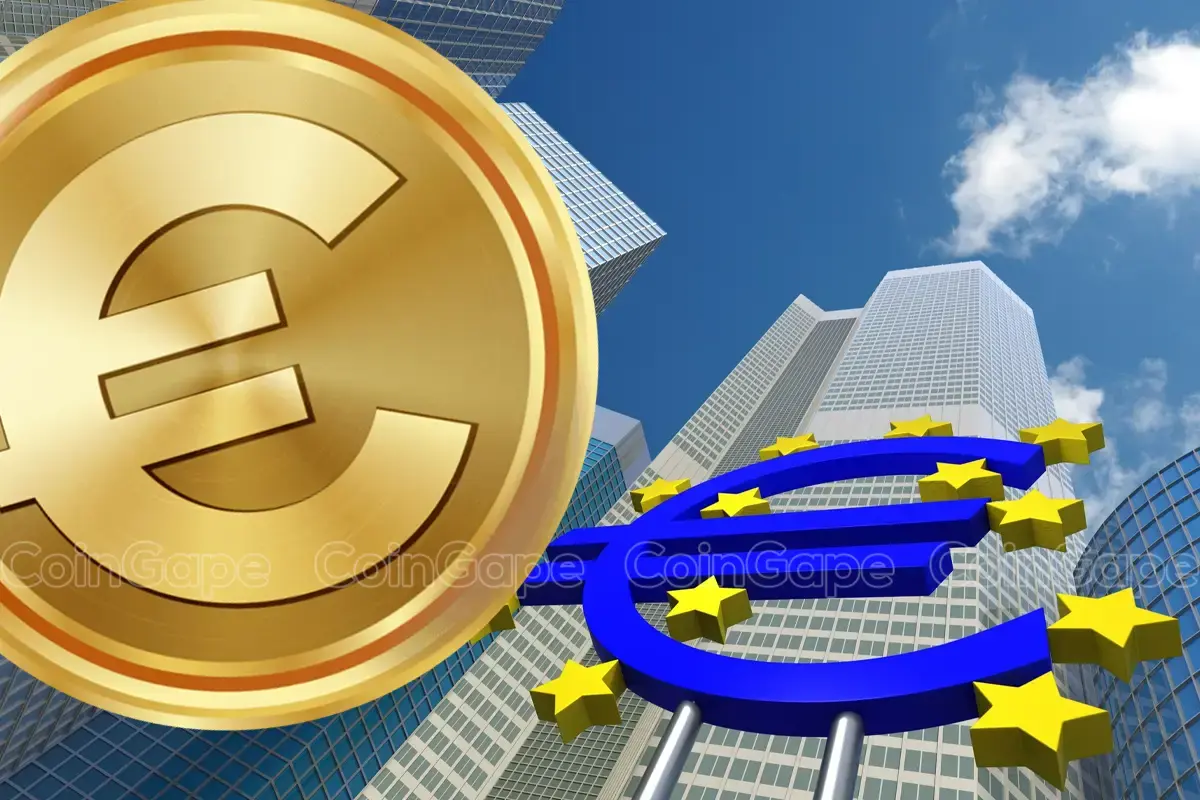Bitcoin continues to dominate global financial discussions as billion-dollar options are set to expire, whales ramp up accumulation, and analysts point to low sell-side risk as a precursor to major price movements. Alongside these developments, the European Central Bank is accelerating its push for a digital euro to compete with Bitcoin and politically-backed stablecoins, while Donald Trump’s opposition to CBDCs shakes up the global debate. Meanwhile, Elon Musk’s X faces legal challenges, spotlighting the intersection of social media, crypto, and regulation, as Coinbase’s CEO reignites the Bitcoin vs. gold debate.
This article breaks down each story, analyzes its market impact, and ties it all together to provide you with actionable insights into how these developments might shape the crypto landscape. Whether you’re a long-term investor or a trader looking to make sense of the news, here’s everything you need to know.
1. Elon Musk’s X May Face Multi-Million Euro Fine in EU Probe
The European Union is investigating Elon Musk’s platform X (formerly Twitter) for allegedly failing to comply with the EU’s Digital Services Act (DSA). The DSA mandates social media platforms to curb disinformation, particularly regarding conflicts like the Israel-Palestine war. If proven non-compliant, X could face a fine of up to 6% of its global revenue, which could amount to hundreds of millions of euros. The probe highlights recent concerns over the spread of unregulated content and the legal consequences of social platforms being held accountable.
Analysis and Market Impact:
For crypto markets, this has indirect implications. X is a popular hub for crypto-related conversations, trading communities, and influencer-driven market movements. Any potential regulatory hurdles or penalties for the platform could decrease trust in it as a tool for crypto discourse. Additionally, Musk’s unpredictable involvement in crypto (e.g., his effect on Dogecoin prices) often attracts market volatility. A significant legal blow to X could reduce its utility for crypto enthusiasts, leading communities to shift elsewhere.
Moreover, the EU’s strict regulatory stance could spill over into crypto companies operating within its jurisdiction, as it signals a growing intolerance for non-compliance. This news serves as a reminder that both social media platforms and crypto ecosystems are under increasing regulatory scrutiny, which may weigh on short-term market sentiment.
2. ECB Proposes Digital Euro to Counter Trump’s Stablecoin Advances
The European Central Bank (ECB) is accelerating its plans for a digital euro in response to increasing competition from private stablecoins, particularly those tied to political figures like Donald Trump. According to reports, the ECB is concerned about the influence of politically-backed stablecoins on the euro’s dominance. The digital euro project aims to modernize the EU’s monetary system, providing a secure and regulated alternative to privately-issued stablecoins.
Analysis and Market Impact:
The ECB’s move highlights a growing trend among central banks: countering the rise of stablecoins with their own Central Bank Digital Currencies (CBDCs). If implemented, the digital euro could provide a more regulated and stable option for digital transactions, potentially attracting users away from decentralized cryptocurrencies and private stablecoins. However, its centralized nature might also deter crypto purists who value anonymity and decentralization.
The global competition between CBDCs and stablecoins introduces uncertainty into the crypto space. Stablecoins like USDT and USDC could face increased regulatory and competitive pressure, possibly leading to market volatility. Additionally, if Trump’s stablecoin gains traction, it could attract a politically-driven user base, creating a new layer of competition for established cryptos. This news reflects a growing trend of governments entering the digital currency arena, which could reshape the global financial landscape.
3. $7.8 Billion in Bitcoin Options Set to Expire on Deribit
Bitcoin options worth $7.8 billion are set to expire at the end of the month on the Deribit exchange. These contracts are significant because their expiration often creates volatility in Bitcoin’s price. As traders rush to close or roll over positions, the market could see sudden price movements, depending on whether options are exercised in the money or expire worthless. Deribit remains the largest crypto options market, with Bitcoin options accounting for the majority of activity.
Analysis and Market Impact:
This massive expiration event has the potential to disrupt Bitcoin’s current price stability. Large-scale expirations often create a tug-of-war between bulls and bears, resulting in heightened volatility. If a significant portion of the options expire in the money, it could lead to a wave of buy or sell orders, depending on the strike prices and market sentiment.
Traders should watch key price levels closely. For instance, if Bitcoin trades above key strike prices near expiration, it could trigger bullish momentum. Conversely, falling below significant levels may result in sell-offs. This news also highlights the growing influence of derivatives in the crypto market, as institutions and retail investors use options to hedge or speculate. Short-term traders could benefit from volatility, but long-term holders should brace for price swings.
4. Bitcoin Whales in Accumulation Phase After Trump Inauguration
According to CryptoQuant, Bitcoin whales have entered a new accumulation phase following Donald Trump’s inauguration announcement. Whales, who hold massive BTC amounts, often signal potential market trends. The report suggests that whale activity is increasing on exchanges, which could indicate preparations for a price rally or hedge against market uncertainties tied to political developments.
Analysis and Market Impact:
The accumulation by Bitcoin whales is a bullish signal, as their activity often precedes significant price moves. Whales’ confidence in BTC may stem from increasing uncertainty in traditional markets, such as fears of inflation or geopolitical tensions. Trump’s inauguration announcement could also be reigniting interest in crypto as a hedge against political and economic uncertainty.
For the broader market, this trend suggests that large investors are doubling down on Bitcoin’s long-term potential, which could encourage retail traders to follow suit. However, whale activity can also lead to heightened price manipulation risks, as large holders have the ability to influence short-term trends. If this accumulation continues, Bitcoin could gain upward momentum, especially if supported by positive macroeconomic news.
5. Bitcoin vs. Gold: Coinbase CEO Says BTC is Better
Coinbase CEO Brian Armstrong has reignited the Bitcoin vs. gold debate, arguing that Bitcoin is a superior store of value. In his statement, Armstrong highlighted Bitcoin’s portability, divisibility, and scarcity as advantages over gold, particularly in an increasingly digital economy. This statement aligns with Bitcoin advocates who view it as “digital gold” for the 21st century.
Analysis and Market Impact:
Armstrong’s comments underscore Bitcoin’s evolving narrative as a hedge against inflation and an alternative to traditional assets like gold. As institutional investors seek diversification, Bitcoin’s digital nature and fixed supply are becoming more appealing compared to gold’s physical limitations. However, gold remains entrenched in traditional finance, meaning Bitcoin has yet to fully replace it as a go-to safe haven asset.
Market-wise, such statements from high-profile figures often boost retail investor confidence in BTC. If institutional adoption continues, Bitcoin’s comparison to gold may drive its price higher in the long term. Still, this narrative also draws scrutiny from regulators, who might increase oversight to manage Bitcoin’s growing prominence.
6. CBDC Ban: Trump’s Impact on Global CBDCs
Reports suggest that Donald Trump’s stance on banning CBDCs could have global ramifications. As a vocal critic of centralized digital currencies, Trump’s influence could shape public opinion and policy, particularly in the U.S., where debates on CBDC development are ongoing. This could potentially slow the progress of CBDCs globally, as other nations take cues from U.S. policies.
Analysis and Market Impact:
Trump’s opposition to CBDCs could polarize the financial industry. On one hand, his criticism may align with crypto enthusiasts who view CBDCs as tools for government overreach and surveillance. On the other hand, it could delay innovation and adoption of digital currencies in the U.S., giving other nations like China a head start with their own CBDC projects.
For the crypto market, this development could strengthen the case for decentralized alternatives like Bitcoin and Ethereum. If CBDCs face pushback, private cryptocurrencies may enjoy more breathing room in the regulatory landscape. However, delays in CBDC adoption could also hinder blockchain adoption in traditional finance, slowing overall innovation.
7. Bitcoin Sell-Side Risk Drops Amidst Low Market Activity
New data suggests that Bitcoin’s sell-side risk has decreased significantly, signaling reduced selling pressure. Analysts attribute this to diminished market activity, as traders appear to be waiting for a clear direction in BTC’s price movement. Low activity often precedes major volatility, as the market builds momentum for the next significant price move.
Analysis and Market Impact:
A drop in sell-side risk indicates that Bitcoin holders are reluctant to sell at current price levels, which can be interpreted as a sign of bullish sentiment. However, low market activity can also lead to sudden and unpredictable volatility when trading picks up. Traders should be cautious, as the current calm could be disrupted by external events, such as macroeconomic shifts or regulatory developments.
For the broader market, this lull might provide an opportunity for accumulation, particularly for long-term investors. If selling pressure remains low, Bitcoin’s price could see upward momentum in the coming weeks. However, any unexpected news could quickly reverse this trend, making it a pivotal moment for market participants.
Key Takeaways :
- Elon Musk’s X Faces EU Scrutiny:
The EU is investigating Musk’s platform X for potential violations of the Digital Services Act. This could result in a multi-million euro fine, impacting trust in X as a hub for crypto discourse and raising concerns about broader regulatory pressures on social media platforms. - ECB Pushes Digital Euro Against Trump-Backed Stablecoins:
The ECB’s digital euro project is an effort to modernize its monetary system and compete with politically-backed stablecoins. This signals a growing government interest in CBDCs, posing challenges to decentralized crypto adoption. - $7.8 Billion Bitcoin Options Set to Expire:
Bitcoin options expiring on Deribit could trigger significant volatility, with the potential for a price rally or a sell-off depending on key strike prices. This event underscores the growing influence of derivatives in crypto markets. - Bitcoin Whales Accumulate Amid Political Uncertainty:
CryptoQuant data shows Bitcoin whales are back in accumulation mode after Trump’s inauguration announcement. This indicates bullish sentiment but raises concerns over potential price manipulation due to concentrated holdings. - Bitcoin vs. Gold Debate Reignited:
Coinbase CEO Brian Armstrong argues that Bitcoin is superior to gold as a store of value, highlighting its scarcity and portability. This reinforces Bitcoin’s narrative as “digital gold,” potentially attracting institutional investors. - Trump’s CBDC Ban Stance Shapes the Debate:
Trump’s vocal opposition to CBDCs could slow global adoption but simultaneously boost the appeal of decentralized cryptocurrencies like Bitcoin. This development reflects a critical divide in the financial industry’s future. - Bitcoin’s Sell-Side Risk Drops Amid Low Activity:
Analysts report decreased sell-side pressure, signaling potential bullish momentum. However, the lull in activity could result in sudden volatility if external factors disrupt market stability.









